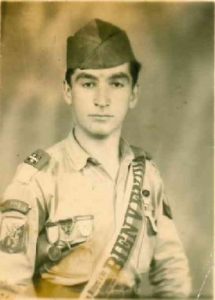
MIGUEL Ángel VELÁSQUEZ Betancourt
Born in San Antonio de Prado, a township of Medellín (Antioquia), in 1932. At the age of 18 he was recruited for military service in the ranks of the Colombian National Army in the city of Ipiales (Nariño). He was designated to fight in Los Llanos Orientales during the period known as La Violencia, which he flatly refused, which is why he was reassigned to make up the second contingent of soldiers who would travel to South Korea to participate in the confrontation between the two Koreas.
As part of the 75th platoon of the Colombian “D” company, he participated in several battles such as Chamizo, Caballo Blanco, Operation Valve, Hill 400, Hill 180, among others. On March 10, 1953, during a battle that lasted more than 8 hours, he was wounded in combat while trying to help one of his comrades. This is how that day went, in Miguel’s own words:
“We began to advance mimicking in the little undergrowth that had been left by the bomber aviation the day before. We launched the attack with a shout of “Viva Colombia!”, we nailed the Colombian flag and the hecatomb began. Bombs were falling, the artillery was firing from one side and from the other. We were firing and we were sticking to the ground to protect ourselves from the enemy fire. At one o’clock in the afternoon many comrades had already fallen dead and wounded. On all sides we could hear the groans of the soldiers, on my side there were three dead comrades on the right and two on the left. As best I could, already without strength and very tired, I advanced a few meters and found a comrade shot in the stomach: he was one of my best friends. He told me: “Velásquez, don’t let me die, I’m bleeding to death”. I got up a little and grabbed him under his arms to drag him where he would be protected from enemy fire.
Suddenly I felt as if I had been stung by an ant, the greatest pain was felt when I saw that a bullet had gone through my left arm. It entered and came out straight on the other side, leaving all my tendons shredded and a crater on the other side of my arm that looked like a flower, blood gushed out in piles. I protected myself in a hole left by the impact of a bomb, as I could I placed the rifle on top of the ground and continued shooting with my right hand until I lost my strength. While I was there my Lieutenant Andrade passed by, he saw me and I told him that I was wounded, he told me: “crawl as far down as you can and look for a place to take shelter”, I complied with what he told me and took shelter in a hole, the fire had already diminished because the enemy had retreated and others were dead, wounded or prisoners.
While I was there, my comrades in the rear began to shoot towards where I was sheltering, because they thought they had found the enemy, so I was able to protect myself by crouching in the hole. I took off my shirt and placed it on the barrel of my rifle, I lifted it up and then two Puerto Rican comrades and an American in a helicopter came to my rescue, they put me on a stretcher, they took me to a Red Cross concentration camp in tents, they gave me first aid and from there they transferred me to a hospital in Busan.
I was hospitalized for three months, they operated on my left arm three times to fix the tendons that had been torn, and then, through therapy, they got my hand moving. Through the windows of the hospital you could see the United Nations cemetery where each country had its own plot to bury the fallen soldiers, we saw trucks full of human parts, heads, hands, bodies and feet that were collected from the battlefield, destroyed by the enemy artillery”.
Miguel, in spite of this experience, had the courage to participate in later missions of the Colombia Battalion, in the rescue of dead and wounded comrades found in the enemy hill, and for these acts of heroism he was awarded the Bronze Medal for Valor, together with Colonel Alberto Ruiz Novoa and Lieutenant Colonel Jaime Polania Puyo. He was also awarded other decorations such as: Combat Rifles, Wounded in Combat, International War, Medal for service to the United Nations Charter and Bronze Star. He returned to Colombia in 1953 aboard the emblematic Aiken Victory Ship on a 31-day voyage across the Pacific.
After the war, Miguel Angel dedicated his life to farming, commerce, his wife Zoila Rosa Sierra Arias and his large family. Although it was one of his greatest desires, he was never able to return to Korea, nor was he offered the opportunity to do so. He passed away in the city of Popayán at the age of 78 on April 18, 2010. His family remembers him as a great lover of birds, dominoes and New Year’s Eve parties, in which he was a great builder of Christmas cribs.
Un Soldado ValienteNacido en San Antonio de Prado, corregimiento de Medellín (Antioquia), en el año 1932. A los 18 años fue reclutado para prestar el servicio militar en las filas del Ejército Nacional de Colombia en la ciudad de Ipiales (Nariño). Fue designado para combatir en los Llanos Orientales durante la denominada época de La Violencia, a lo que se negó rotundamente, razón por la cual fue reasignado para conformar el segundo contingente de militares que viajarían a Corea del Sur para participar en el enfrentamiento entre las dos Coreas.Como parte del pelotón 75 de la compañía “D” colombiana, participó en varias batallas tales como el Chamizo, el Caballo Blanco, Operación Válvula, Cerro 400, Cerro 180, entre otras. El 10 de marzo de 1953, durante un enfrentamiento de más de 8 horas, fue herido en combate intentando auxiliar a uno de sus compañeros. Así transcurrió ese día en palabras del propio Miguel:“Comenzamos a avanzar mimetizados en la poca maleza que había dejado la aviación de bombarderos el día anterior. Nos lanzamos al ataque con un grito de “¡Viva Colombia!”, clavamos la bandera colombiana y comenzó la hecatombe. Caían bombas, la artillería de parte y parte disparando. Nosotros disparábamos y nos clavábamos a la tierra para protegernos del fuego enemigo. A la una de la tarde ya habían caído muchos compañeros muertos y heridos. Por todas partes se oían los quejidos de los soldados, a mi lado derecho había tres compañeros muertos y al izquierdo dos. Como pude, ya sin fuerzas y con mucho cansancio, avancé unos metros y encontré un compañero con un tiro en el estómago: era uno de mis mejores amigos. Me dijo: “Velásquez no me deje morir, me estoy desangrando”. Me levanté un poco, lo cogí por debajo de los brazos para arrastrarlo donde estuviera protegido del fuego enemigo.De pronto sentí como si me hubiera picado una hormiga, el dolor más grande sentí al ver que una bala me había atravesado el brazo izquierdo. Entró y salió derecho al otro lado, dejándome todos los tendones destrozados y un cráter al otro lado del brazo que parecía una flor, brotaba sangre por montones. Me protegí en un hueco que había dejado el impacto de una bomba, como pude coloqué el fusil encima de la tierra y seguí disparando con la mano derecha hasta que perdí las fuerzas. Estando ahí pasó mi Teniente Andrade, me vio y le dije que estaba herido, él me dijo: “arrástrese como pueda hacia abajo y busque un lugar donde refugiarse”, cumplí con lo que me dijo y me refugié en un hueco. El fuego ya había mermado pues el enemigo que quedaba había retrocedido y otros estaban muertos, heridos o prisioneros.Estando ahí mis compañeros de la retaguardia comenzaron a disparar hacia donde yo estaba refugiado, pues pensaban que se trataba del enemigo, entonces como pude me protegí agazapándome en el hueco. Me quité la camisa y la coloqué en el cañón del fusil, la levanté y entonces vinieron a rescatarme dos compañeros puertorriqueños y un americano en un helicóptero, me colocaron en una camilla, me sacaron a un campo de concentración de la Cruz Roja en carpas, me socorrieron con los primeros auxilios y de allí me trasladaron a un hospital en Busan.Duré hospitalizado tres meses, me operaron el brazo izquierdo tres veces para arreglarme los tendones que tenía destrozados, después a punta de terapia me pusieron en movimiento la mano. Por las ventanas del hospital se divisaba el cementerio de las Naciones Unidas donde cada país tenía su propio terreno para enterrar los militares caídos, veíamos llegar volquetas llenas de partes humanas, cabezas, manos, cuerpos y pies que recogían del campo de batalla destrozados por la artillería enemiga.”Miguel, a pesar de esta experiencia, tuvo la valentía de participar en misiones posteriores del Batallón Colombia, en labores de rescate de compañeros muertos y heridos que se encontraban en el Cerro enemigo. Por estos actos de heroísmo le fue otorgada la Medalla de Bronce al Valor, en compañía del Coronel Alberto Ruiz Novoa y el Teniente Coronel Jaime Polanía Puyo. Además le fueron otorgadas otras condecoraciones como: Fusiles de Combate, Heridos en Combate, Guerra Internacional, Medalla por servicio a la Carta de la Naciones Unidas y Estrella de Bronce. Regresó a Colombia en el año de 1953 a bordo de la emblemática Nave Victoria de Aiken en un viaje de 31 días por el Pacífico.
Retrato con medallas, 25 Julio 1956
Miguel en garita de guardia, Compañía "D" Colombia, Corea 1951-1953
Miguel y compañero, Corea, 1951-1953
Miguel y compañeros, Corea, 1951-1953
Miguel en carpa de descanso 1951-1953
Miguel y compañeros en recuperación, Hospital en Busan, 1953
Korean War - Key Events
December 6, 1950
The U.S. Marines at the Chosin Reservoir begin their “attack in a different direction” as they engage in a fighting retreat to the port of Hŭngnam. Two entire Chinese armies have been tasked with the destruction of the 1st Marine Division. They succeed in driving the American force from North Korean territory but pay an enormous price: as many as 80,000 Chinese troops are killed or wounded, and the CPVF Ninth Army Group is rendered combat-ineffective for months. “Frozen Chosin” becomes one of the most-storied episodes in U.S. Marine Corps history.
These events are taken from the Encyclopedia Britannica
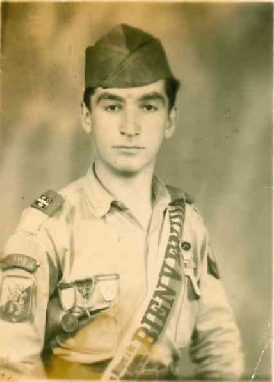
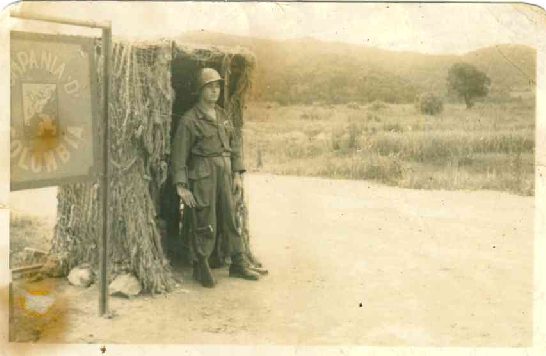
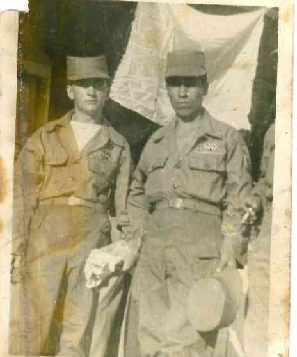
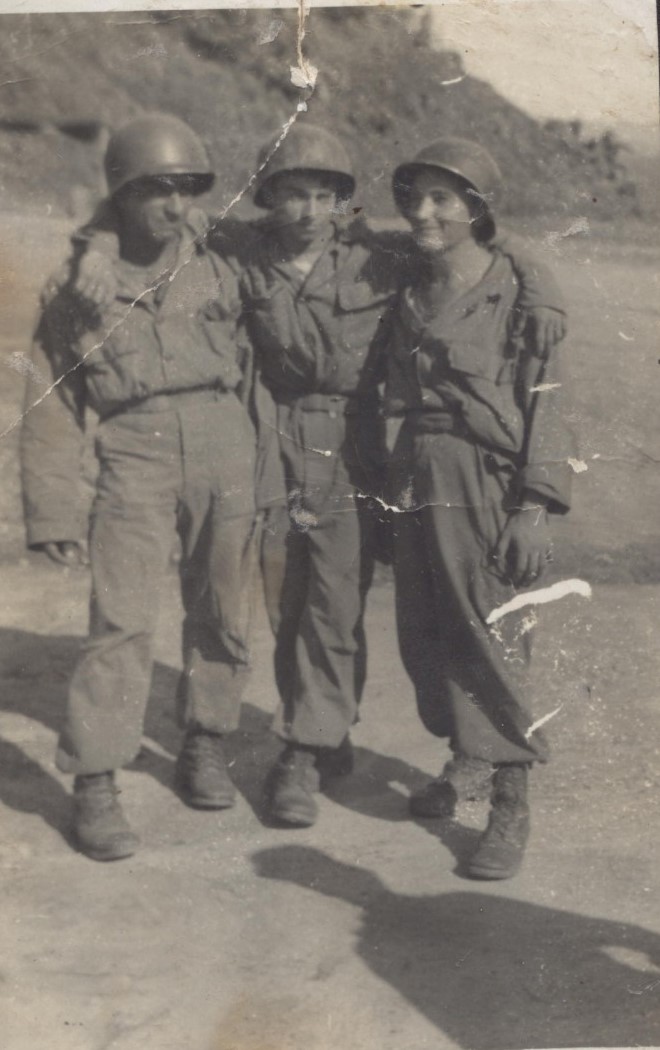
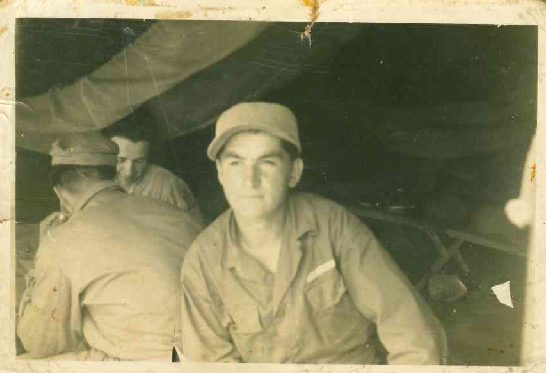
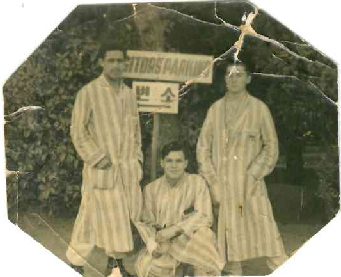

Comments
Likes 4
You must be a registered user to comment or like - please register to join us!